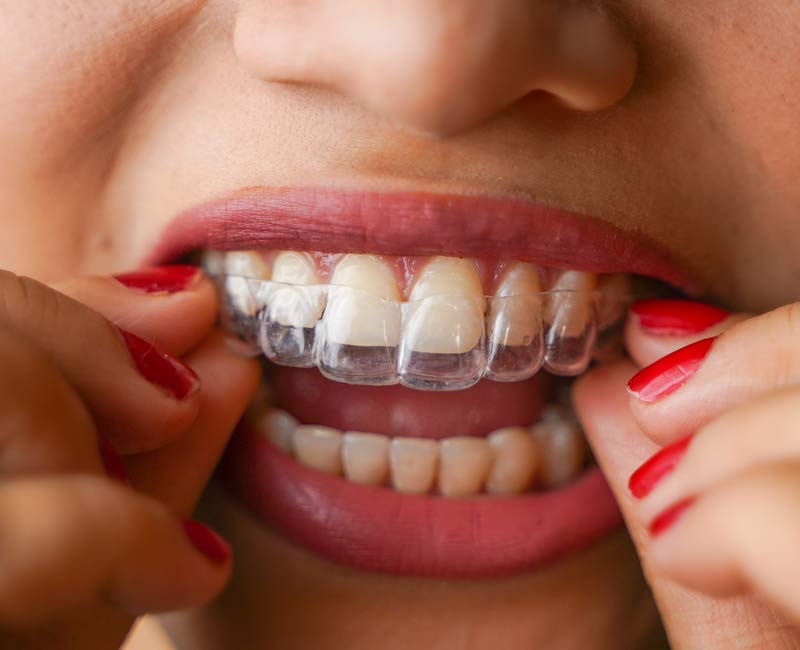If you want to keep your teeth straight after getting your braces off, you need to wear a retainer. This device keeps your teeth in proper alignment for years to come. Follow your dental care provider’s recommendations on when to wear it and how to care for it so you continue to reap the benefits.
Advertisement
Cleveland Clinic is a non-profit academic medical center. Advertising on our site helps support our mission. We do not endorse non-Cleveland Clinic products or services. Policy

A teeth retainer is a custom-made device you wear over your teeth. It helps keep your teeth in their new, correct position after braces. A general dentist or an orthodontist fits you for your retainer.
Advertisement
Cleveland Clinic is a non-profit academic medical center. Advertising on our site helps support our mission. We do not endorse non-Cleveland Clinic products or services. Policy
Your braces (or in some cases, clear aligners) straightened your teeth for a long time. But your teeth can still move on their own (back to their previous position) once the braces come off. Wearing a retainer helps keep your teeth in the correct place so they don’t move.
Think of it this way: Braces straighten your teeth. But your retainer keeps them that way. They help your teeth “retain” their position.
The process for making the retainer for your teeth depends on the type you get:
For removable retainers:
Advertisement
For fixed retainers:
The process for fixed retainers takes longer than creating an impression for a removable retainer. But you leave your dental care provider’s office with your retainer in place. You don’t have to wait for a lab to make it.
You may have some soreness at first. If you do, it’s probably from your retainer nudging your teeth into alignment. You may need to take over-the-counter pain relievers while you adjust.
But your teeth shouldn’t hurt once you start wearing your retainer regularly. The fit should be snug yet comfortable over your teeth.
Ask your provider how much soreness you should expect and for how long. If you have ongoing discomfort, they may need to make adjustments.
You’ll likely need to wear your retainer day and night (full-time) for at least four to six months. After that, you’ll need to wear the teeth retainer at night for the rest of your life.
When your provider takes off your braces, your teeth are perfectly aligned. Using a retainer keeps your teeth in the correct position so the results last. Using a retainer in the long term makes all that hard work of getting and wearing braces or aligners pay off.
Most of the risks have to do with discomfort you might feel if your teeth shift or if your retainer gets damaged. You could feel discomfort if:
Not washing your retainer properly can create opportunities for bacteria to grow. They can damage your retainer. Germs can also cause bad breath, gum disease and cavities.
Follow these tips so you don’t break or lose your retainer:
Your dental care provider will provide instructions about how to clean it. Here are some general guidelines:
Advertisement
See your dentist or orthodontist if you lose your retainer or it breaks. A broken retainer can poke and irritate your gums or lips. Don’t wait too long to contact your provider. The longer you wait, the more your teeth can shift back to their previous position. And the more your teeth shift, the harder it is to get your retainer to fit right.
If your retainer is too snug or no longer fits, your teeth have probably shifted. There’s nothing you can do to make your current retainer fit. Your dental provider will need to adjust it or make a new retainer.
No, retainers don’t straighten teeth. Braces or aligners do. Teeth retainers can’t apply the constant, steady force needed to move teeth into their correct positions.
If you forgot to wear your retainer for a few weeks and your teeth have shifted, wearing it may nudge your teeth back. You’ll probably feel some discomfort as the retainer slowly pushes your teeth back into alignment. But this usually only works for small, short-term changes.
If you don’t wear your retainer, your teeth will shift and move. Shifting teeth can prevent your upper and lower teeth from aligning when your mouth is closed. That’s why most dental providers prescribe teeth retainers after braces come off.
Advertisement
Bacteria can grow on a retainer just like they can grow inside your mouth. The bacteria that cause bad breath can also create a nasty smell on your retainer. That’s why cleaning your retainer daily is so important. If your retainer starts to smell, scrub it with soap, water and a soft toothbrush. Ask your dental provider if you can soak it in a special cleanser made for retainers.
Braces give you straight teeth. But your retainer makes them last. A lot of time, energy and money go into the braces that help you achieve that perfect smile. You can keep it for years by following your dental provider’s recommendations for a teeth retainer. Make using one part of your routine.
Advertisement
Dentistry plays an important role in oral health. Cleveland Clinic’s experts can design a personalized plan that will keep you smiling for the long haul.

Last reviewed on 10/22/2025.
Learn more about the Health Library and our editorial process.